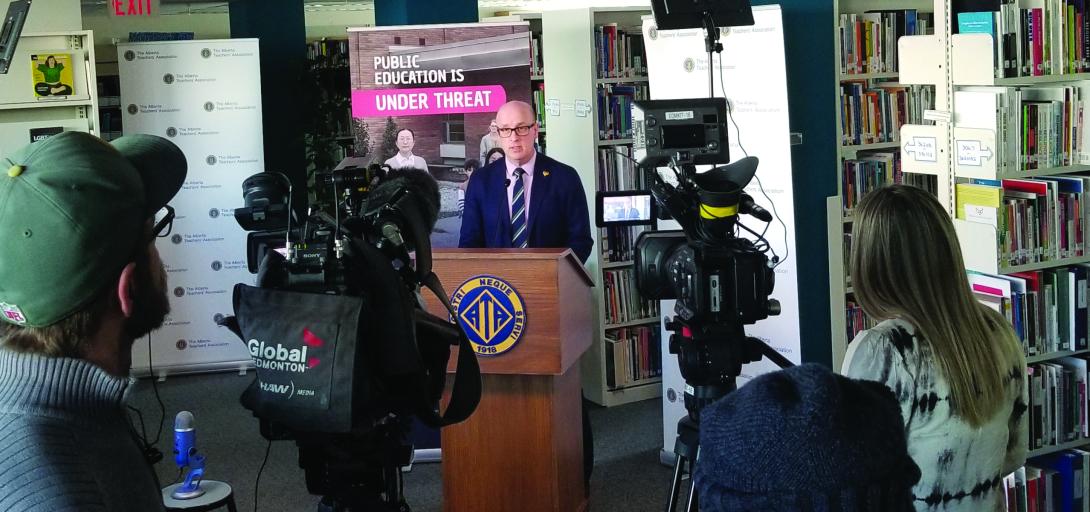Question: After the recent Provincial Executive Council election, I was wondering, what is the relationship between Council and ATA locals and why do we have both? For that matter, why do we have an Annual Representative Assembly when we could have locals vote on policy and budget?
Answer: The structure of the Alberta Teachers’ Association (ATA) is set out in provincial legislation, most importantly the Teaching Profession Act, and in bylaws that help establish structures, processes and procedures within that legislative framework.
To begin with, that legislation establishes the Alberta Teachers’ Association as, well, an “association.” This means that the provincial Association is the core and foundation from which individual locals and other subgroups derive their authority. Locals and subgroups are created by the provincial Association and can be disestablished by the provincial Association.
Teacher organizations in some other provinces are, by way of contrast, established as “federations” and, conceptually, these provincial teachers’ organizations are created by their constituent locals acting in concert. In these organizations, the individual locals are the source of governing authority that is granted to the central organization.
As an association, the ATA governance begins with the Annual Representative Assembly (ARA). While the allocation of delegates to ARA is calculated by local, ARA is not an assembly of locals. Once they arrive at the assembly, individual delegates are under no obligation to take direction from their local or vote in the same way as other delegates from their local. Votes are tabulated by a count of individual delegates and, for the duration of the meeting, these delegates are ideally supposed to be focused on the greater good of the larger association within the provincial context, rather than on the particular interests of the locals to which they belong when establishing a budget or considering policy resolutions.
Provincial Executive Council is established in legislation to act between ARAs in respect to managing the Association, generally in accordance with the policy set at ARA. Members of Council are elected by teachers within a geographic district which, by design, will include more than one local within its boundaries. Table officers of the Association, which includes the president, past president and two vice-presidents, are elected in provincewide votes. This structure of representation means that members of Council have authority and legitimacy that is not dependent upon locals and reinforces the design intention that members of Council, in their deliberation and votes, look and see beyond their particular local or regional interests.
While local presidents will meet with provincially elected representatives at least three times a year, it is important to note that these meetings are intended to facilitate dialogue and consultation and do not have any capacity to make binding decisions.
The legislated structure described above is echoed in matters relating to collective bargaining. The provincial ATA has authority under the Public Education Collective Bargaining Act (PECBA) to undertake bargaining on behalf of teachers across the entire province and when a vote on a matter related to the bargaining process is required, it is conducted on a provincial scale. Even in matters of local bargaining, it is the provincial Association which, in accordance with the Labour Relations Act, holds the bargaining certificates that give it agency to act on behalf of individual bargaining units. That is why members of provincial Association staff assigned to assist with local bargaining are referred to as representatives of the bargaining agent (RBAs). Of course, in the case of local bargaining, votes are conducted at the bargaining unit level.
Now everything you have read so far is accurate, but when it comes to the practical matter of running an effective and responsive organization that can successfully represent and advance the interests of its members, culture is as or even more important. It is critical, and I hope a shared aspiration of all involved in Association governance provincially or locally, that elected representatives respect the legitimate role and responsibilities of their provincial and local counterparts and collaborate to move the Association forward for the benefit of the profession. ❚
Questions for consideration in this column are welcome. Please address them to Dennis Theobald at dennis.theobald@ata.ab.ca.

ATA Executive Secretary
Read more
View the entire digital issue of the ATA News
See the latest issue

